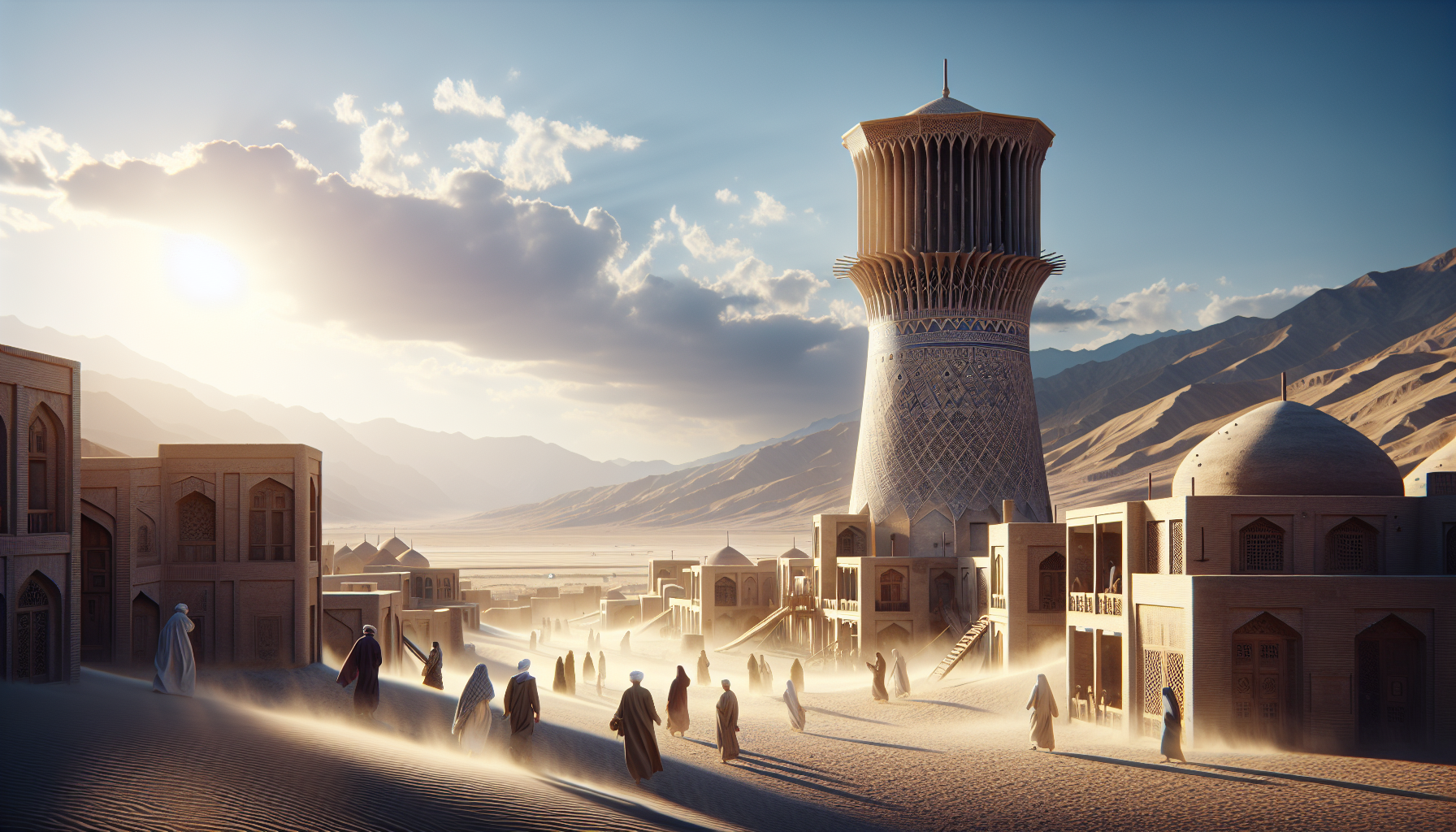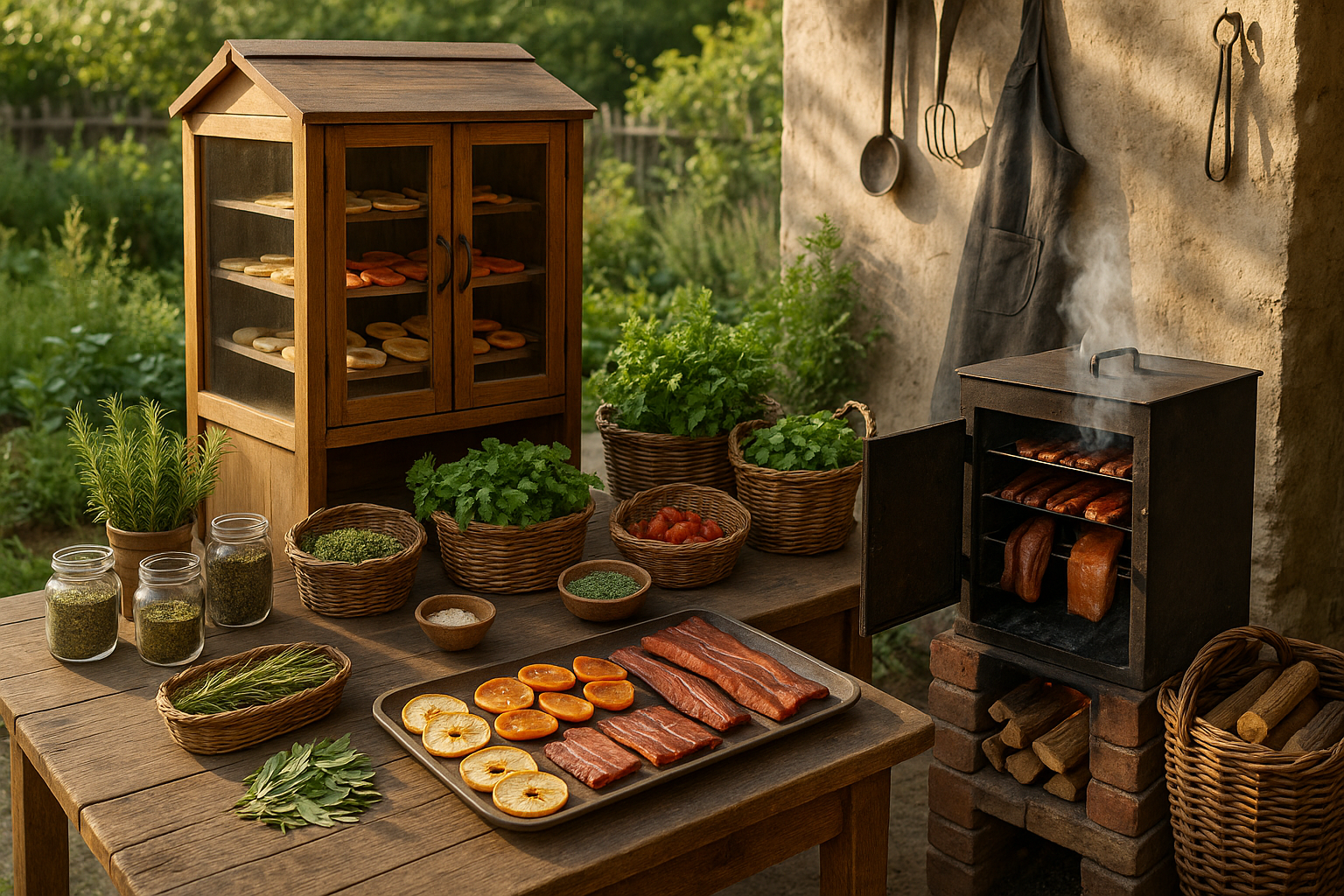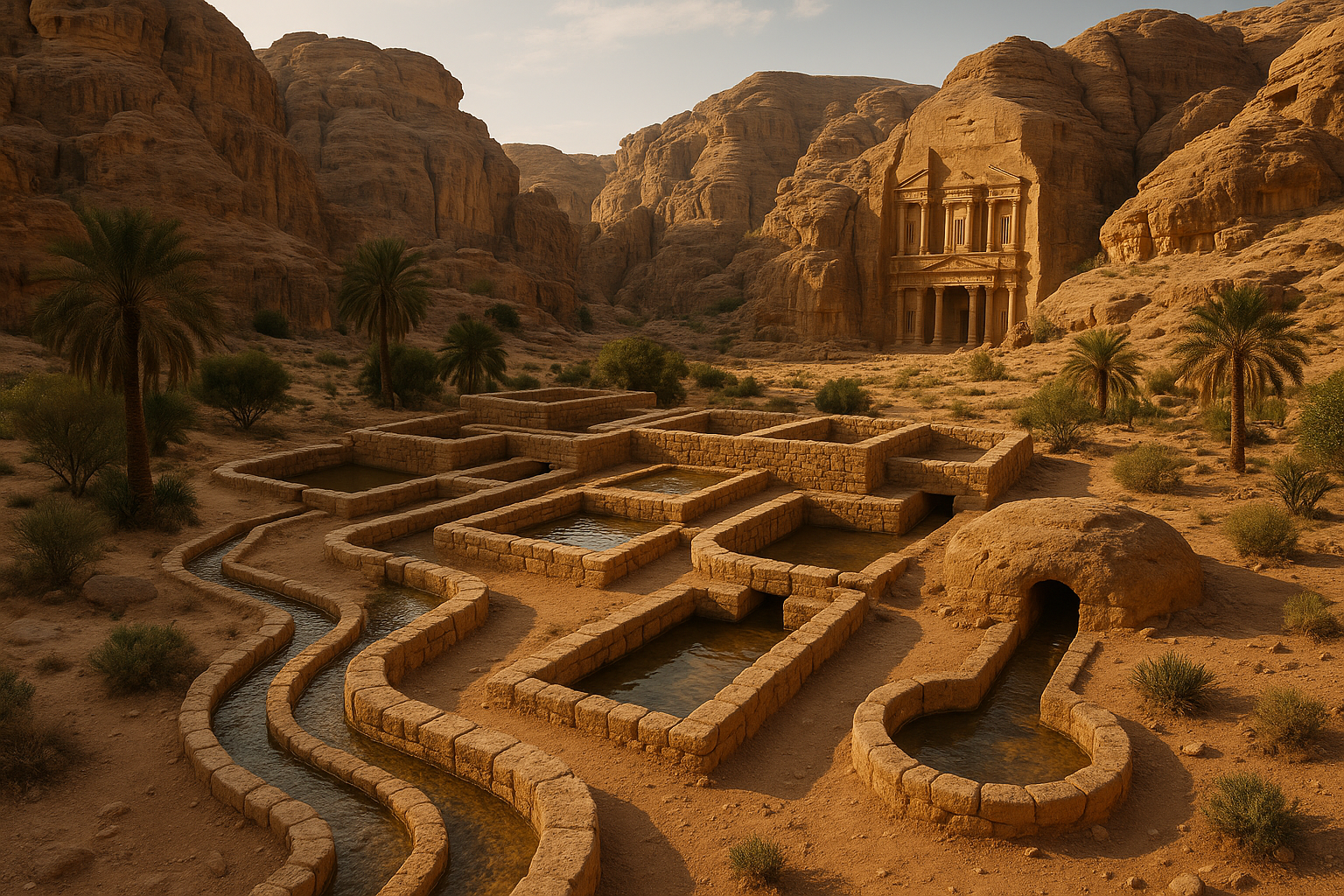In the arid expanses of Persia, where the relentless sun reigns supreme and temperatures often soar to sweltering heights, the quest for relief has been an enduring challenge for its inhabitants. Yet, amidst the deserts and ancient cities, a timeless architectural marvel quietly whispers secrets of sustainable cooling solutions that modern technology is only beginning to rediscover. Enter the enchanting world of wind towers—elegant structures that stand tall as a testament to human ingenuity, harnessing the natural power of the wind to bring respite from the scorching heat. 🌬️ These architectural wonders, known as “badgirs” in Persian, have been ingeniously cooling homes for centuries, long before the advent of air conditioning. As the world grapples with climate change and the urgent need for sustainable living, these ancient designs offer invaluable lessons in harmonizing with nature to create comfortable living spaces.
The concept of utilizing wind towers for natural cooling is not only a fascinating glimpse into the architectural prowess of ancient Persia but also a critical exploration into sustainable living practices that can be adapted and adopted globally. Wind towers are more than mere structures; they are a profound expression of the synergy between human habitation and the environment. By capturing the cool breeze and channeling it into living spaces, these towers provide a cost-effective and eco-friendly cooling solution that minimizes energy consumption and reduces reliance on artificial cooling systems. In our journey through this article, we will delve into the history and evolution of wind towers, exploring their intricate designs, the science behind their operation, and the cultural significance they hold in Persian society.
As we peel back the layers of history, we will uncover how these wind-catching towers have evolved over centuries, adapting to different climates and architectural styles across Persia and beyond. From the traditional adobe structures of Yazd to the more ornate designs found in Shiraz, each wind tower tells a unique story of regional adaptation and innovation. We will also examine the materials and construction techniques that contribute to their efficiency, shedding light on the craftsmanship that has allowed these structures to withstand the test of time. Moreover, our exploration will highlight the role of wind towers in the broader context of sustainable architecture and how modern architects are drawing inspiration from these ancient designs to create energy-efficient buildings today.
Finally, we will address the implications of reintroducing wind tower technology in contemporary architecture, particularly in urban environments where energy consumption is at its peak. By integrating traditional methods with modern advancements, we can pave the way for a sustainable future that honors the wisdom of the past while embracing innovation. Through interviews with architects and environmental experts, we will explore the potential challenges and opportunities in reviving this ancient technology, as well as the broader environmental and economic benefits it offers. 🌍 Join us on this captivating journey as we rediscover the elegance and practicality of wind towers, and explore how these ancient structures can inspire a new wave of sustainable architectural solutions in our ever-changing world.
The Ancient Innovation of Wind Towers
Wind towers, or wind catchers, have been integral to Persian architecture for centuries. These structures ingeniously harness the natural power of wind to cool buildings, providing a sustainable alternative to modern air conditioning systems. The design of wind towers is a testament to the ingenuity of ancient Persian architects who capitalized on the region’s climatic conditions to create comfortable living environments.
In essence, wind towers function by capturing the breeze at higher altitudes and channeling it down into the building, creating a natural ventilation system. This process not only cools the indoor space but also improves air quality by circulating fresh air. Historically, these structures have been a vital component in the architecture of hot and arid regions, demonstrating a profound understanding of sustainable design principles.
The development and implementation of wind towers in Persia have varied over the years, with different regions adapting the basic concept to suit their specific environmental conditions. For example, the city of Yazd is renowned for its unique wind towers, which are designed to capture even the slightest breeze. The city’s architecture is a perfect blend of form and function, where these towers serve both aesthetic and practical purposes.
The Mechanics Behind Wind Towers
The basic principle behind wind towers is relatively simple, yet highly effective. The tower is usually a tall structure with an opening at the top to capture wind. As the wind enters, it is funneled down through the tower and into the interior spaces of the building. The movement of the air through the building creates a cooling effect, as it displaces hot air and lowers the overall temperature. This natural air circulation is particularly beneficial in desert climates where temperatures can soar during the day but drop significantly at night.
Moreover, wind towers can also be designed to work in reverse, expelling hot air from inside the building. This is particularly useful during the cooler months when the indoor temperature needs to be regulated. By utilizing the stack effect, where hot air naturally rises, the towers can effectively remove warm air and pull in cooler air from lower levels or shaded areas.
For a visual understanding of how wind towers function, watch the video titled “Windcatchers: The Natural Air Conditioners of Iran” by the channel ‘Timelapse Iran’.
Modern Applications and Innovations
In recent years, the principles behind wind towers have been revisited by architects and engineers seeking sustainable solutions for modern buildings. As environmental concerns and energy costs rise, the need for passive cooling systems has become more pressing. Wind towers offer a low-cost, energy-efficient alternative to conventional air conditioning systems.
Contemporary architects are integrating modern technology with traditional wind tower designs to enhance their efficiency. For example, incorporating solar panels to power supplementary fans can further improve air circulation without relying on external power sources. Additionally, advances in materials science have allowed for more durable and efficient designs that can be adapted for various climates and building types.
The table below compares traditional and modern wind tower designs:
| Feature | Traditional Wind Towers | Modern Wind Towers |
|---|---|---|
| Materials | Brick, Clay | Steel, Composite Materials |
| Energy Source | Wind-Driven | Hybrid (Wind + Solar) |
| Efficiency | Moderate | High |
Case Studies: Wind Towers in Modern Architecture
Several modern buildings worldwide have successfully integrated wind tower principles into their design. These case studies highlight the adaptability and efficiency of wind towers in contemporary settings. For example, the Eastgate Centre in Harare, Zimbabwe, uses a similar passive cooling strategy, resulting in significant energy savings. This building has been recognized as one of the most environmentally friendly commercial buildings in the world.
Another notable example is the use of wind towers in the construction of the Masdar City project in Abu Dhabi. This ambitious project aims to create a zero-carbon, zero-waste urban community, and wind towers play a crucial role in its environmental strategy. The integration of these structures has significantly reduced the need for artificial cooling, showcasing the potential of ancient technologies in addressing modern environmental challenges.
Check out the video “Masdar City – An Eco-Friendly Future” by ‘Science Channel’ for an in-depth look at this innovative project.
Environmental and Economic Benefits
The use of wind towers for natural cooling offers numerous environmental and economic benefits. Firstly, these structures significantly reduce the reliance on electricity for cooling, leading to lower energy consumption and reduced greenhouse gas emissions. This reduction in energy use not only benefits the environment but also results in substantial cost savings for building owners.
Additionally, wind towers contribute to improved indoor air quality by promoting natural ventilation. This is particularly important in urban areas where air pollution is a major concern. By continuously circulating fresh air, wind towers help to mitigate the accumulation of indoor pollutants, creating healthier living and working environments.
The long-term cost savings associated with wind towers extend beyond energy bills. These structures have low maintenance requirements and a long lifespan, making them a cost-effective investment for sustainable building design. Furthermore, the use of locally sourced materials for construction can further reduce costs and support local economies.
The potential for wind towers to contribute to sustainable urban development is immense. As cities around the world grapple with the challenges of climate change and rapid urbanization, the need for innovative solutions like wind towers becomes increasingly urgent. By drawing on ancient wisdom and modern technology, we can create buildings that are not only energy-efficient but also resilient to the changing climate.
Incorporating Wind Towers in Modern Design
To incorporate wind towers effectively in modern architecture, architects and engineers must consider several key factors, including building orientation, wind patterns, and climate conditions. These considerations ensure that the towers function optimally and provide maximum cooling efficiency. Furthermore, collaboration with local communities and experts in traditional building techniques can enhance the design and implementation process, ensuring that the final product is both functional and culturally appropriate.
- Consider climate and wind patterns for optimal placement.
- Utilize modern materials and technology to enhance efficiency.
- Engage with local communities for culturally sensitive designs.
In conclusion, while modern technology has brought many advancements, looking back at traditional methods like wind towers can offer valuable lessons in sustainability and efficiency. These structures are not just relics of the past but hold the potential to shape a more sustainable future. By embracing and adapting these ancient technologies, we can work towards a more harmonious relationship with our environment.🌍

Conclusion
In conclusion, the exploration of wind towers, or “badgirs,” as a method for natural cooling in Persia is a testament to the ingenuity and sustainability of ancient architectural practices. Throughout this article, we have delved into the historical context and technical design of these remarkable structures, demonstrating how they harness natural forces to create comfortable living environments in harsh climates.
We began by examining the origins of wind towers, tracing their development back to the ancient Persian Empire. These structures have been integral to Persian architecture for centuries, reflecting a deep understanding of local environmental conditions and an early commitment to sustainable living. The evolution of wind towers is a testament to the innovation and adaptability of ancient architects who sought efficient solutions long before modern technology was available.
From a technical standpoint, we discussed how wind towers function by capturing and channeling cool breezes into living spaces while facilitating the expulsion of warm air. This natural cooling process, devoid of electricity or mechanical parts, highlights an eco-friendly approach that modern society can learn from. The strategic placement and construction of these towers, tailored to the specific wind patterns and climate conditions of the region, underscore the precision and foresight inherent in their design.
Moreover, we explored the contemporary relevance of wind towers in the face of climate change and increasing energy demands. As modern societies grapple with the consequences of excessive energy consumption and environmental degradation, the principles underlying wind tower design offer valuable insights. By integrating similar passive cooling techniques into modern architecture, we can reduce reliance on air conditioning systems, thus lowering energy consumption and minimizing carbon footprints.
The importance of revisiting and revitalizing ancient sustainable practices cannot be overstated. Wind towers serve as a powerful reminder that solutions to modern challenges can often be found in the wisdom of the past. By embracing these age-old techniques, we can create a more sustainable future that respects and preserves our planet’s resources.
I encourage you, dear reader, to reflect on the potential applications of wind tower principles in your own environment. Whether you are an architect, urban planner, or simply an enthusiast of sustainable living, the concepts explored in this article provide a foundation for innovation and adaptation. Consider how you might incorporate elements of natural cooling into your designs or advocate for such practices in your community. 🌍
Sharing this knowledge and engaging in discussions about sustainable architecture can foster a greater collective awareness of the importance of environmentally conscious practices. I invite you to comment on your thoughts and experiences related to natural cooling methods. Sharing this article with peers and networks can further amplify the conversation, inspiring others to explore and implement these time-tested solutions.
In the spirit of continuous learning and adaptation, I urge you to explore further. Numerous resources and case studies are available online that delve deeper into the intricacies of wind towers and similar sustainable technologies. Here are a few to get you started:
1. “Wind Towers: An Ancient Air Conditioning System” from Ancient Origins
2. “Badgir: An Ancient Persian Method of Ventilation” from Architecture Revived
3. “Harnessing Wind Energy: Lessons from the Past” on ResearchGate
As we continue to seek ways to live in harmony with our environment, let us draw inspiration from the ingenuity of our ancestors. By doing so, we not only honor their legacy but also take meaningful steps toward a more sustainable and resilient future. 🌱
Thank you for joining me on this journey through the world of wind towers. I look forward to your thoughts and contributions to this vital conversation. Together, we can make a difference, one breeze at a time.




